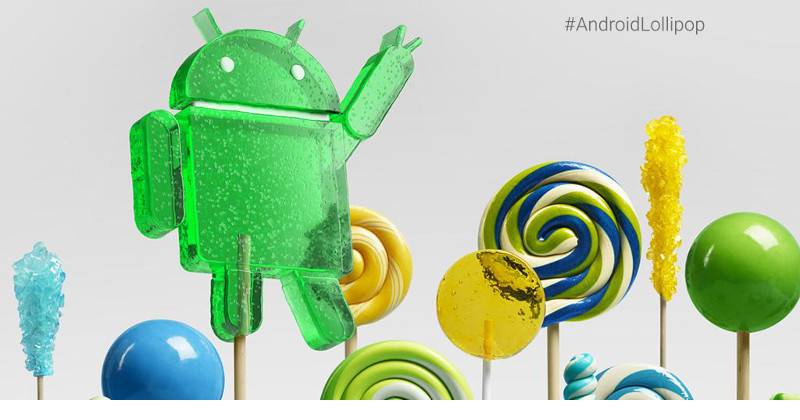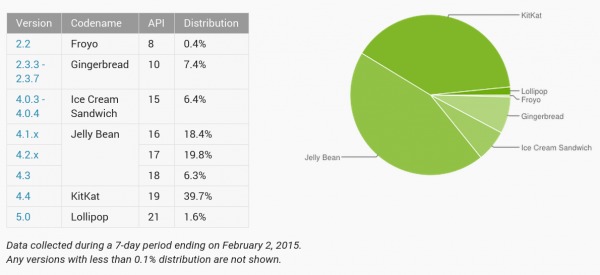
It was a long time coming, but finally it’s here. Google’s sweet Lollipop has finally reached enough numbers to qualify for inclusion in the Android Distribution chart as of February 2. This marks the version’s stronger push in the market. The question now is how fast will the adoption be, given Android 5.0 is already experiencing a few technical difficulties in rolling out to devices, even among Google’s own Nexus ranks.
Despite the initial fervor surrounding Android’s biggest release yet, it isn’t exactly surprising to see Android 5.0 take some time before it reaches even 0.1 percent of the market, the minimum share required to gain entry into the pie chart. The changes that it brings are quite significant, both under the hood and in design, that it was bound to hit a few bumps on the road when it comes to rolling it out to existing devices.
In fact, it was only a few days ago that Google finally released Android 5.0.2 factory images for its own Nexus 7 mobile versions, both 2012 and 2013 editions, hinting that there might have been some issues with adaptation. Even HTC hints at problems when it announced that carrier versions of its HTC One M7 and M8 smartphones wouldn’t be getting Lollipop within its 90-day promise.

Despite those issues, Android 5.0 finally managed to break through the 0.1 percent barrier, even going as far as capping out at 1.6 percent. The sudden bump up sparks hope at a faster rate in the coming months. As for the rest of the gang, Android 4.4 KitKat unsurprisingly but only minimally increased its numbers, from 39.10 percent to 39.70. All the rest went down, even old timers like Jelly Bean and Gingerbread. All except Android 2.2 Froyo, which didn’t move at all and still surprisingly remains on the chart at 0.40 percent.
SOURCE: Google









